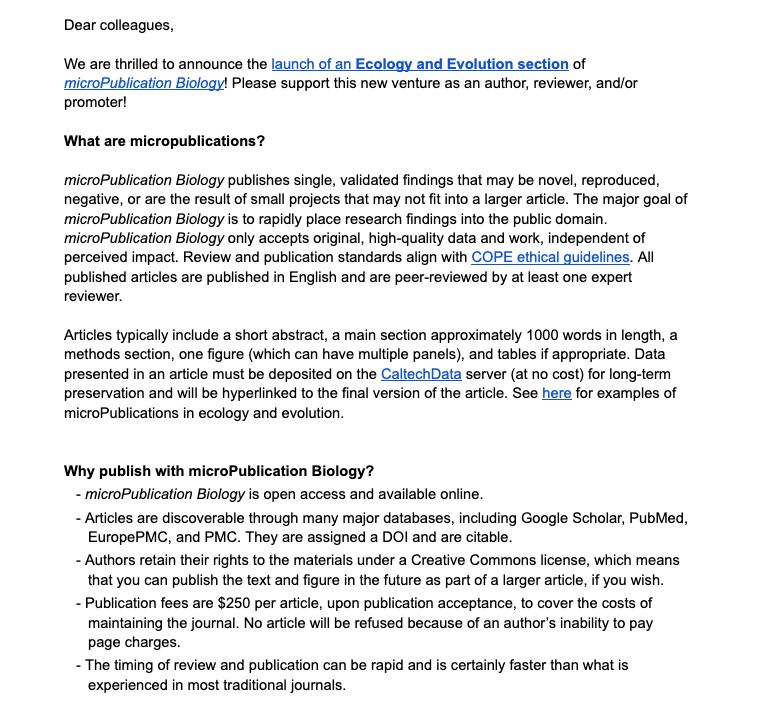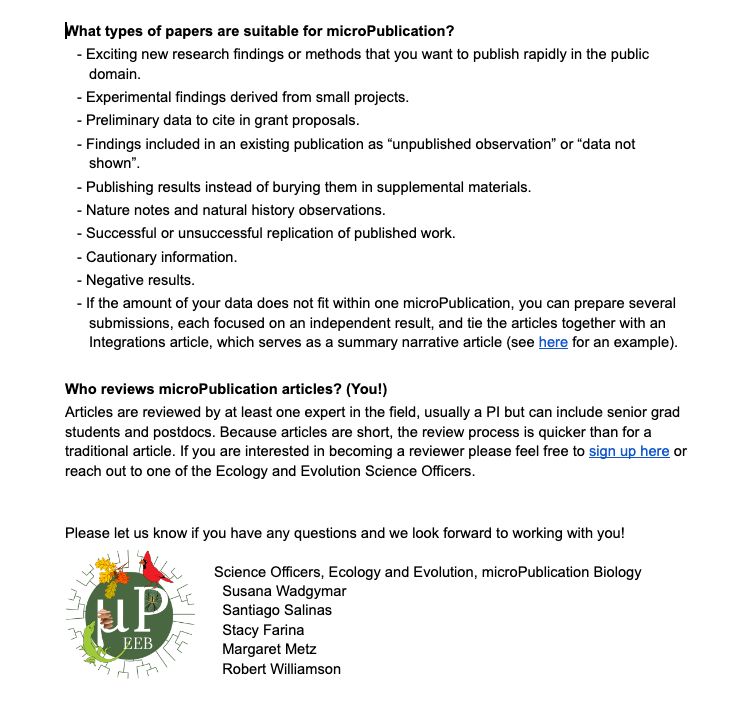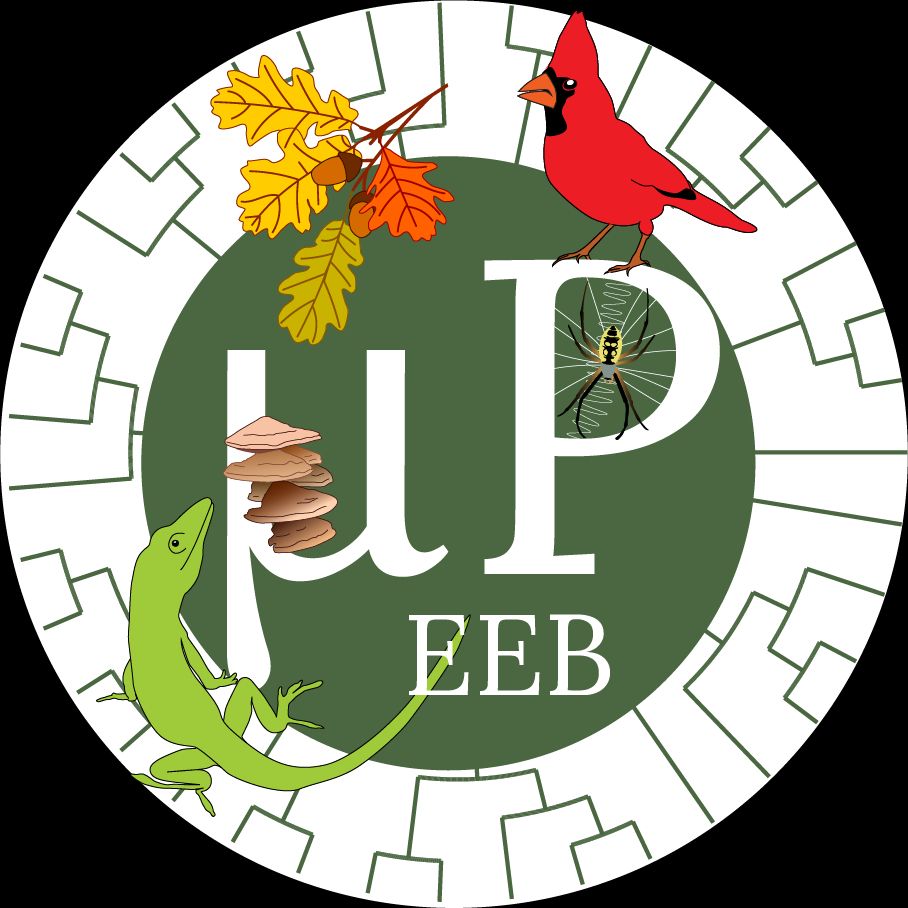West Chester University | Career Opportunities
Interested in teaching & research at a PUI, with awesome supportive colleagues and a talented, diverse student body? My dept at WCU is hiring for a TT position, any Biology subfield! Join us in the Philly 'burbs!
www.schooljobs.com/careers/wcup...
25.07.2025 17:59 — 👍 0 🔁 0 💬 0 📌 0

We are thrilled to announce the launch of an Ecology and Evolution section of microPublication Biology! Please support this new venture as an author, reviewer, and/or promoter!
microPublication Biology publishes single, validated findings that may be novel, reproduced, negative, or are the result of small projects that may not fit into a larger article. The major goal of microPublication Biology is to rapidly place research findings into the public domain. microPublication Biology only accepts original, high-quality data and work, independent of perceived impact. Review and publication standards align with COPE ethical guidelines. All published articles are published in English and are peer-reviewed by at least one expert reviewer.
Articles typically include a short abstract, a main section approximately 1000 words in length, a methods section, one figure (which can have multiple panels), and tables if appropriate.

What types of papers are suitable for microPublication?
- Exciting new research findings or methods that you want to publish rapidly in the public domain.
- Experimental findings derived from small projects.
- Preliminary data to cite in grant proposals.
- Findings included in an existing publication as “unpublished observation” or “data not shown”.
- Publishing results instead of burying them in supplemental materials.
- Nature notes and natural history observations.
- Successful or unsuccessful replication of published work.
- Cautionary information.
- Negative results.
- If the amount of your data does not fit within one microPublication, you can prepare several submissions, each focused on an independent result, and tie the articles together with an Integrations article, which serves as a summary narrative article (see here for an example).

mock microPublication logo depicting a cardinal, orb weaver, oak leaves/acorns, anolis, and shelf fungi.
📣 Introducing 📣
microPublications in Ecology and Evolution!
Please help support this effort by spreading the word and submitting and reviewing papers!
#evolution 🌎 🌍 🌏 🧪 #PlantScience #conservation
15.04.2024 13:22 — 👍 115 🔁 80 💬 1 📌 9
Do you know where I can look out for info for next year's meeting? I'm at a PUI in Philly area and this looks like a great meeting I could attend with my undergrads!
18.01.2024 18:45 — 👍 0 🔁 0 💬 1 📌 0



